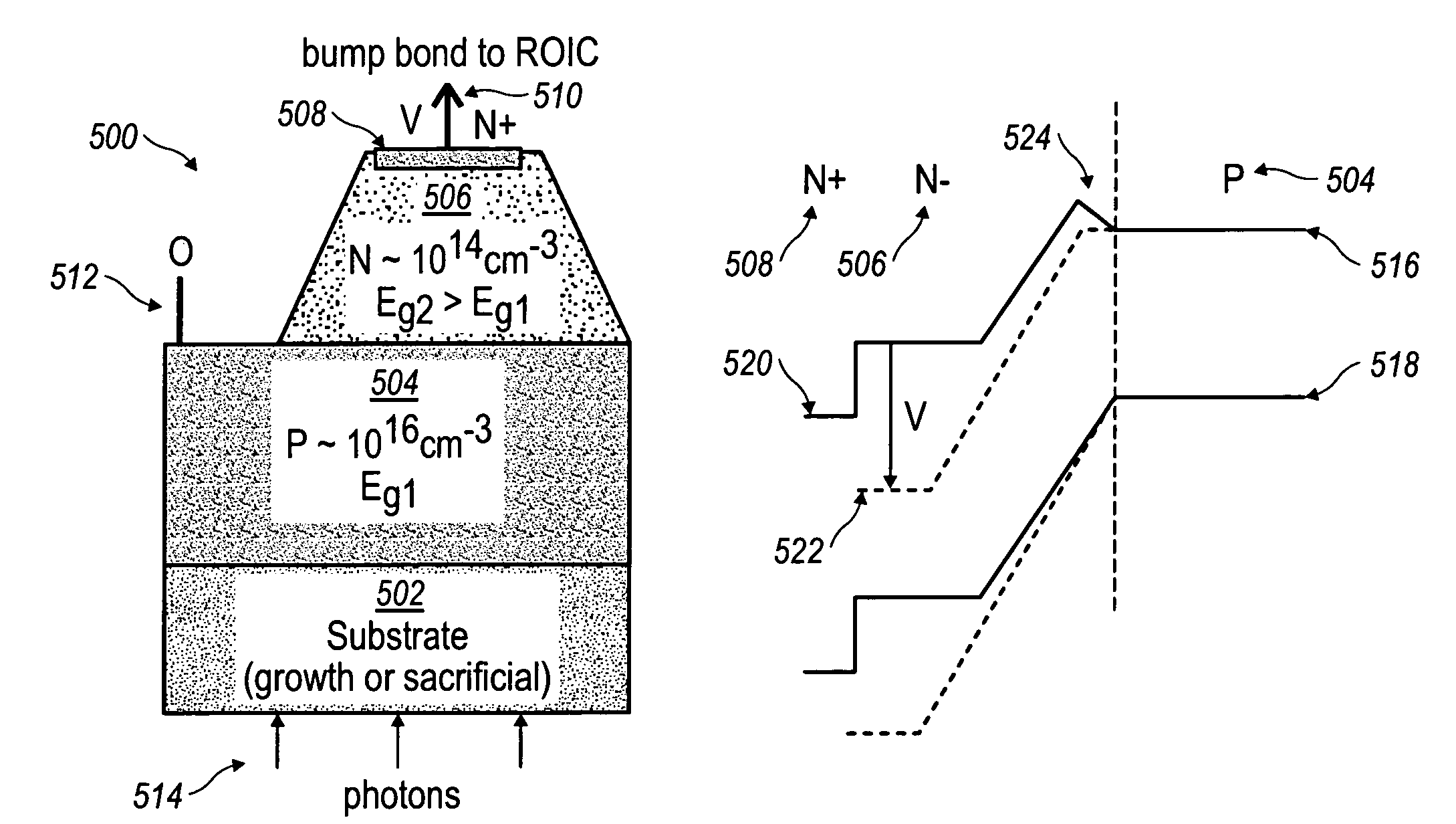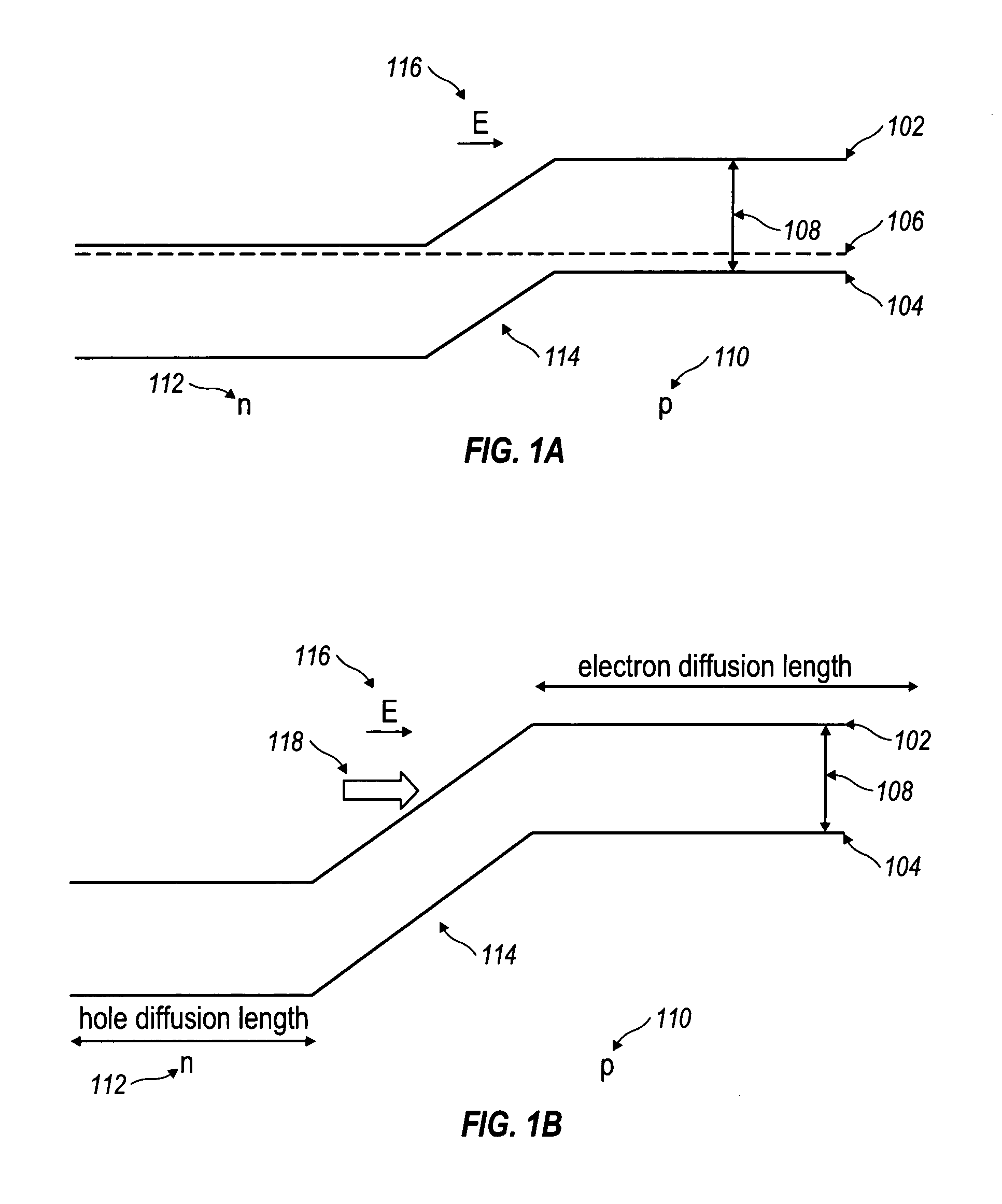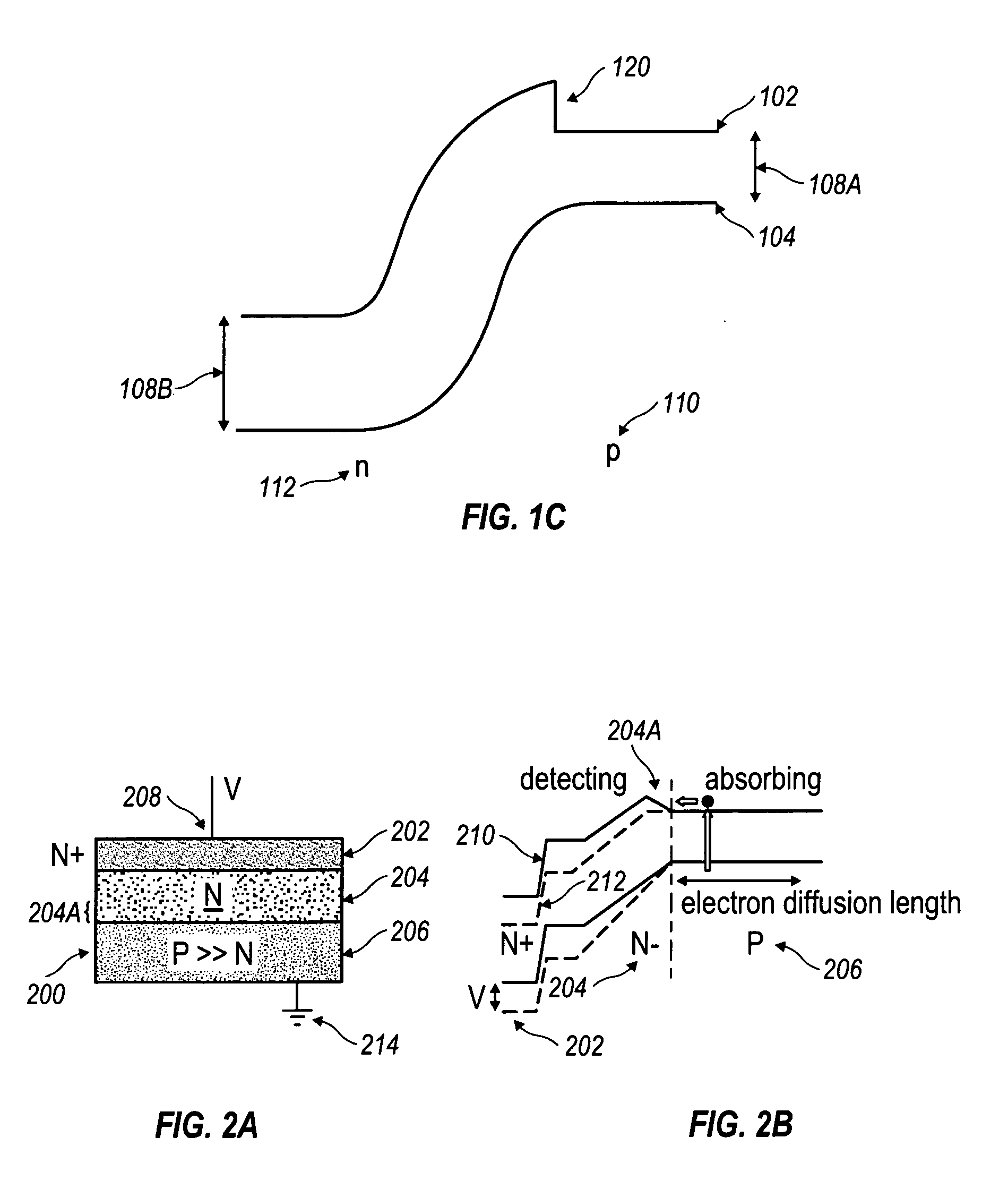Separate absorption and detection diode for VLWIR
a detection diode and absorption technology, applied in the field of radiation detection, can solve the problems of photodiodes, like other electrical devices, experiencing noise on current signals, not being normally practicable, and making images less understandabl
- Summary
- Abstract
- Description
- Claims
- Application Information
AI Technical Summary
Benefits of technology
Problems solved by technology
Method used
Image
Examples
Embodiment Construction
[0045]The numerous innovative teachings of the present application will be described with particular reference to the presently preferred embodiment (by way of example, and not of limitation).
[0046]In one example embodiment, the present innovations include a separate absorption and detection (SAD) diode, having an architecture with a p-type infrared (IR) semiconductor absorbing region coupled to an adjacent n-type region of generally higher bandgap than the absorber region. In preferred embodiments, the p-type region is heavily doped relative to the n-region such that the depletion region of the diode is substantially confined (preferably entirely confined) to the n-type, higher bandgap region of the device. For temperatures such that Nmaj>ni, where ni is the intrinsic carrier concentration of the absorbing p-type region, the overall dark current of a homojunction diode is dominated by generation through S-R centers in the depletion region of the diode. Thus, the wide bandgap nature...
PUM
 Login to View More
Login to View More Abstract
Description
Claims
Application Information
 Login to View More
Login to View More - R&D
- Intellectual Property
- Life Sciences
- Materials
- Tech Scout
- Unparalleled Data Quality
- Higher Quality Content
- 60% Fewer Hallucinations
Browse by: Latest US Patents, China's latest patents, Technical Efficacy Thesaurus, Application Domain, Technology Topic, Popular Technical Reports.
© 2025 PatSnap. All rights reserved.Legal|Privacy policy|Modern Slavery Act Transparency Statement|Sitemap|About US| Contact US: help@patsnap.com



